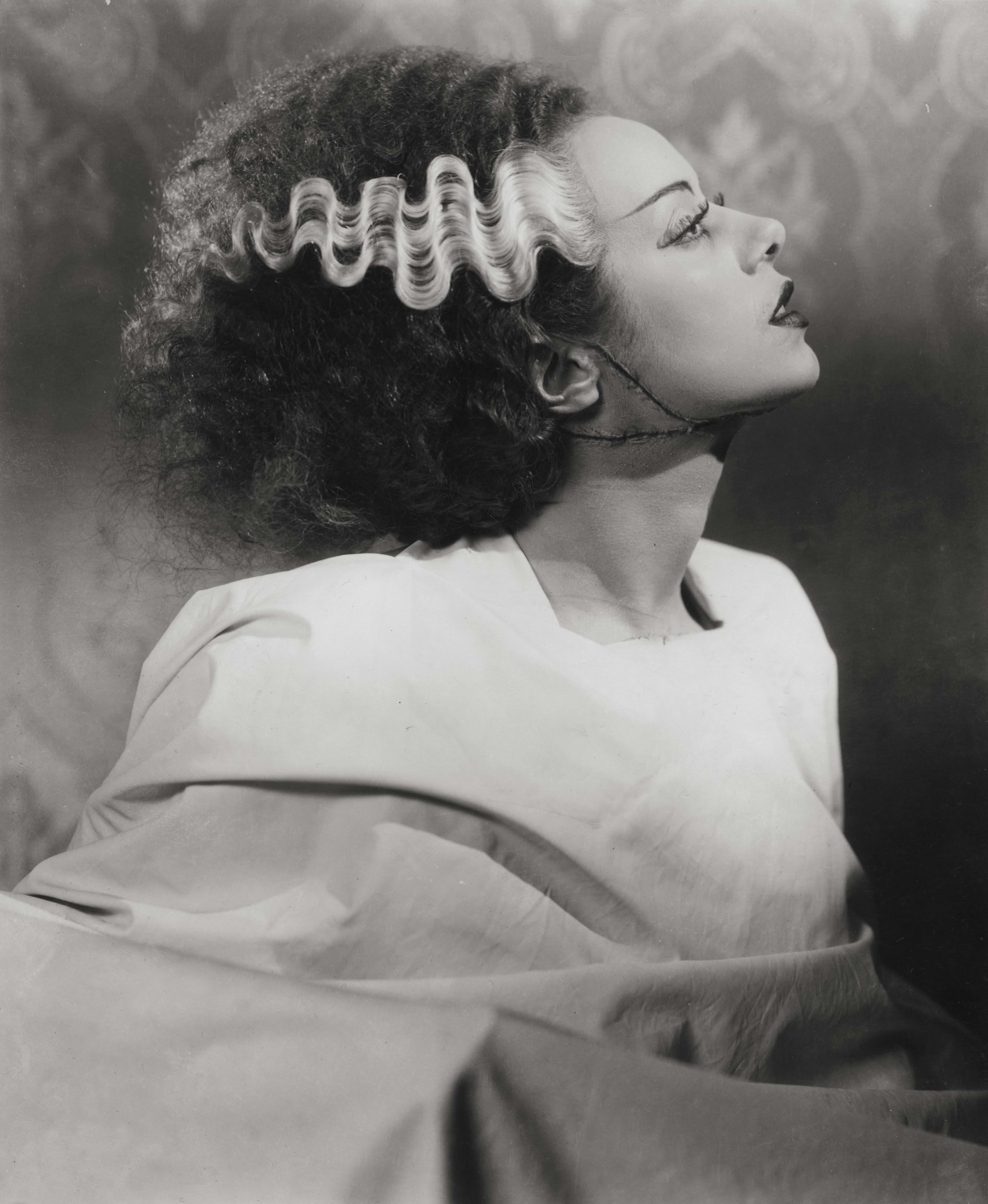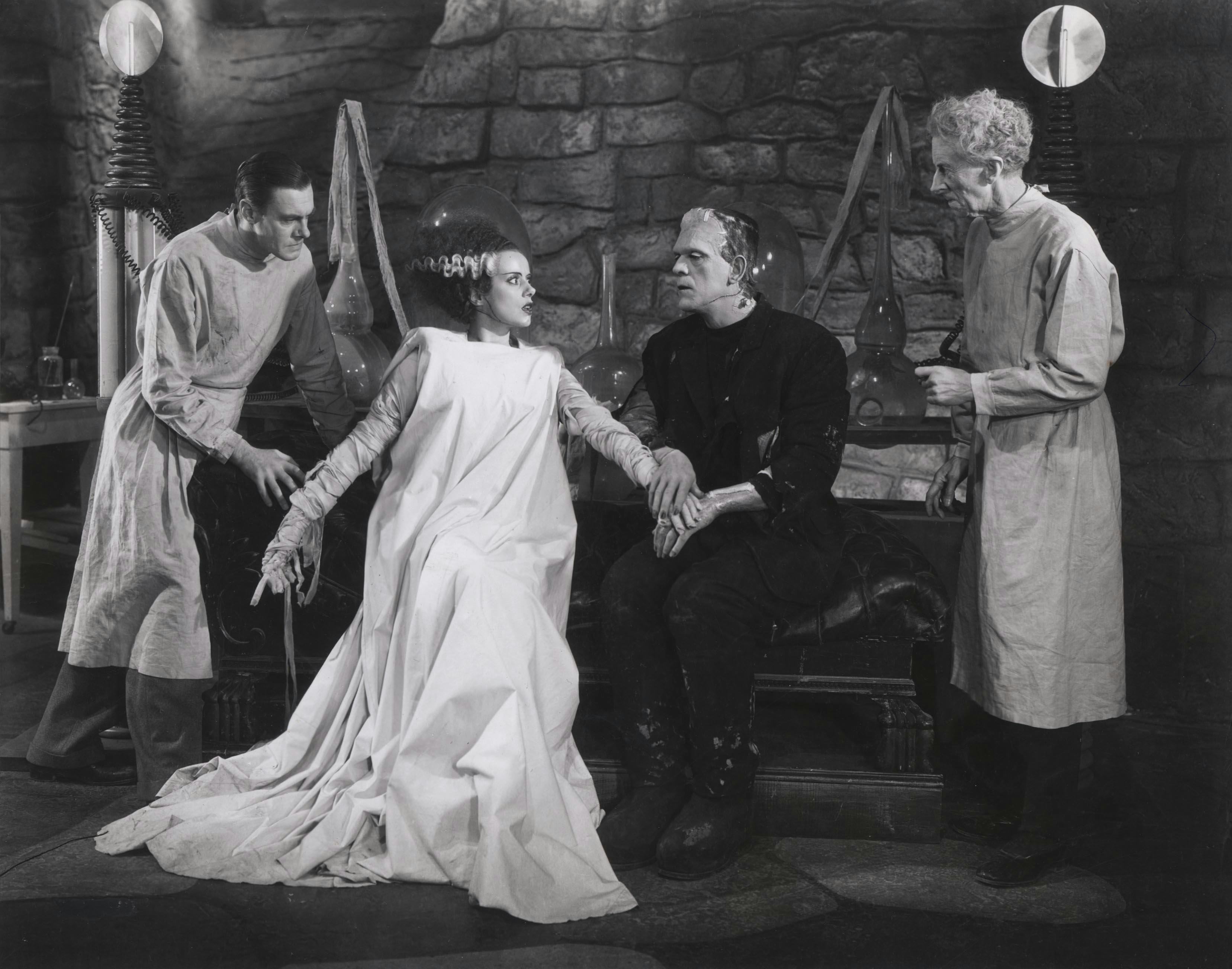
When Henry Frankenstein flipped the switch and harnessed the power of lightning to conduct his infamous experiment in the 1931 horror classic, he didn't just bring his monster to life, he also set up one of the first major movie sequels. Bride of Frankenstein, which celebrates its 90th anniversary this week, continued the story of Frankenstein — and once the sequel was alive, it was hard to stop, just like the Creature.
Bride of Frankenstein, originally released on April 20, 1935, was not the first movie sequel. The Fall of a Nation, a now-lost follow-up to D. W. Griffith's influential and infamous silent film The Birth of a Nation, hit theaters almost two decades earlier, in 1916. There were some sequels in the '20s, too, like 1925's Don Q Son of Zorro, Douglas Fairbanks' second stab at the swashbuckler, five years after The Mark of Zorro. Bride of Frankenstein isn't even the first horror sequel, as the 1915 German film The Golem, which just so happens to be about a hulking figure that's brought to life, ended up being the first of a trilogy. But Bride of Frankenstein is undeniably the earliest sequel that is still relevant today, and for good reason: It's a horror masterpiece.
Picking up shortly after the events of the original Frankenstein's, Bride begins with a classic sequel trope: a retcon, and the reveal that neither Dr. Frankenstein (Colin Clive) nor his creation (Boris Karloff) actually perished in the burning windmill or at the hands of the torch-bearing mob of villagers at the last film's climax. Although Frankenstein initially wants to leave being a mad scientist behind him, his old mentor, Dr. Pretorius (Ernest Thesiger), convinces him to help with his own experiments. He wants to make a mate for the Monster.
Meanwhile, the Monster is trying to survive in the countryside. Bride of Frankenstein's greatest triumph is the sympathy it has for the Monster, who now has limited speech, intelligence, and the capacity for love and sadness. Frequently, Bride's horror comes from seeing how the Monster (who didn't ask to be created) is treated. He saves a girl from drowning, but rather than thank him, the young woman screams in terror, and hunters shoot at him. He meets a blind hermit — finally, somebody who won't be scared by his appearance — but this brief moment of respite and kindness soon ends when the mob finds the Monster.
The titular Bride makes only a tiny appearance near the very end of the film, but it's a memorable one, and not just for Elsa Lanchester's iconic hairdo and wide-eyed screech. When the Creature sees that even a mate created just for him has the same response as everybody else who sees him, he concludes that "We belong dead," and he takes the Bride and Pretorius down with him as he blows up the lab. If hubris drove the first film, tragedy drives the sequel.

That Bride of Frankenstein finds new depths even as it goes well beyond Mary Shelley's source material was never a guarantee. Indeed, anybody who has seen a sequel in the 90 years since Bride knows that movies that are greenlit because the first one made a lot of money aren't always high quality. Frankenstein director James Whale had no interest in making a sequel, thinking that he had already told a complete story. But Universal Pictures, which was beginning to make a lucrative niche for itself with horror movies like Dracula, was keen on following up Frankenstein's success, and they wanted Whale at the helm. Whale resisted, though when he changed his mind, he became perhaps the first director to see what specific sort of leverage he had and use it. The director agreed on the condition that Universal bankroll another movie he wanted to make, the 1934 mystery One More River.
Additionally, Whale wanted complete creative control over Bride, which he was granted. Having already made Frankenstein as straightforward Gothic horror and feeling he'd exhausted that vein, Whale, who was openly gay in the 1930s, used his creative freedom to make Bride subversive and campy, as seen in a sequence where Dr. Pretorius shows off some little homunculi he made. Rather than try to one-up the original's scares, Whale focused on the pathos of longing and not fitting in. Compared to Frankenstein, nearly every aspect of Bride has more personality — perhaps because it was more personal.
Bride of Frankenstein was a huge hit, and even though the Monster blew himself up at the end, he would return (though Whale would not as director) in Son of Frankenstein (1939) and Ghost of Frankenstein (1342). The sequel begat a franchise, and in 1943, Frankenstein Meets the Wolf Man marked the start of the first shared cinematic universe when the titular terror from another Universal horror movie, The Wolf Man, crossed over. Perhaps the Marvel Cinematic Universe has Bride of Frankenstein to thank. In its success, Bride helped usher in film franchises that seem to be as enduring as Dr. Frankenstein's creation.







